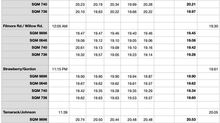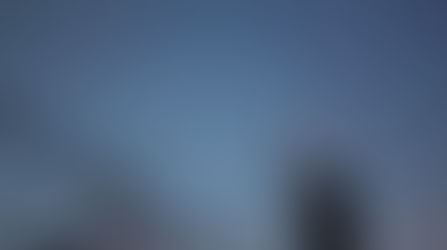Capturing the Eclipse With a Beer Can
- Chuck Bueter
- Apr 17, 2024
- 2 min read
A solargraph is a simple way to image a solar eclipse, and simple stuff appeals to me. I tried two variations for imaging the 2024 apparition using 16-ounce beer cans for pinhole cameras, one containing black-and-white photographic paper and the other having blue SunPrint paper. With few prominent clouds all day, the images yielded respectable solid arcs interrupted by possible gaps from the eclipse darkening.
On the morning of April 8, 2024, I and friends set up stacks of cans on the grounds of Coxhall Gardens in Carmel, IN. One stack of three cans was affixed to a small tree on the north side of a carillon tower and another was on a post on the south side; a third stack was on a post near the east pond; and a fourth was on a tree by the north parking lot. Shortly after sunrise, about a dozen cans were in place and exposed to sunlight.

My zeal to capture a foreground image of a prominent carillon tower in the final result introduced uncertainty in some SunPrint image. We mounted some of the cans on the only available vertical support where the carillon tower would break the solar arc as intended--a small tree. Some bare lower branches may have been the source of the gaps in continuity in the solar arc, as opposed to the dimming of the sun being the cause.

I also tried to bracket the exposures as if they were normal photographs by using three different-sized holes, ranging from a large pinhole to a pencil-sized hole. The smaller holes seemed to fare well for the black-and-white phototgraphic paper, while the bigger holes yielded fuller arcs for the SunPrint images.
The black and white photographic paper images have distinct gaps where the sunlight dimmed during the eclipse. The solar arcs in the SunPrint images are disrupted in nondescript areas. Gaps in received sunlight could be caused by low tree branches, the carillon tower, and/or the eclipse itself.
When we gathered the cans at the end of the day, I did not record which images were associated with the respective sites. Nor did I take the standard image from each site with a cell phone camera in Pano mode. As an experiment it was a bit sloppy, but as an Eclipse Day sidebar with friends it was a lot of fun.

I also erred in aiming most of the cans due south, intending to have symmetrical arcs. I could have aimed the pinholes toward the direction of totality so they would have been better centered. Aiming due south yields a symmetrical arc. Aiming east or west of due south often yields one end of the arc at the horizon and the other end cut off before the horizon.
With a diversity of hole sizes, paper types, and pointing directions, half of the solargraph images had notable results, which I'm considering a success. In science, like in life, embracing diversity often yields better outcomes than just one perspective. The six resulting solargraphs are snippets of discovery and joy that captured a spectacular celestial spectacle.






[Original post updated April 19, 2024.]
Thanks to Cameron, Evan, and John, who helped with this eclipse sidebar.








































